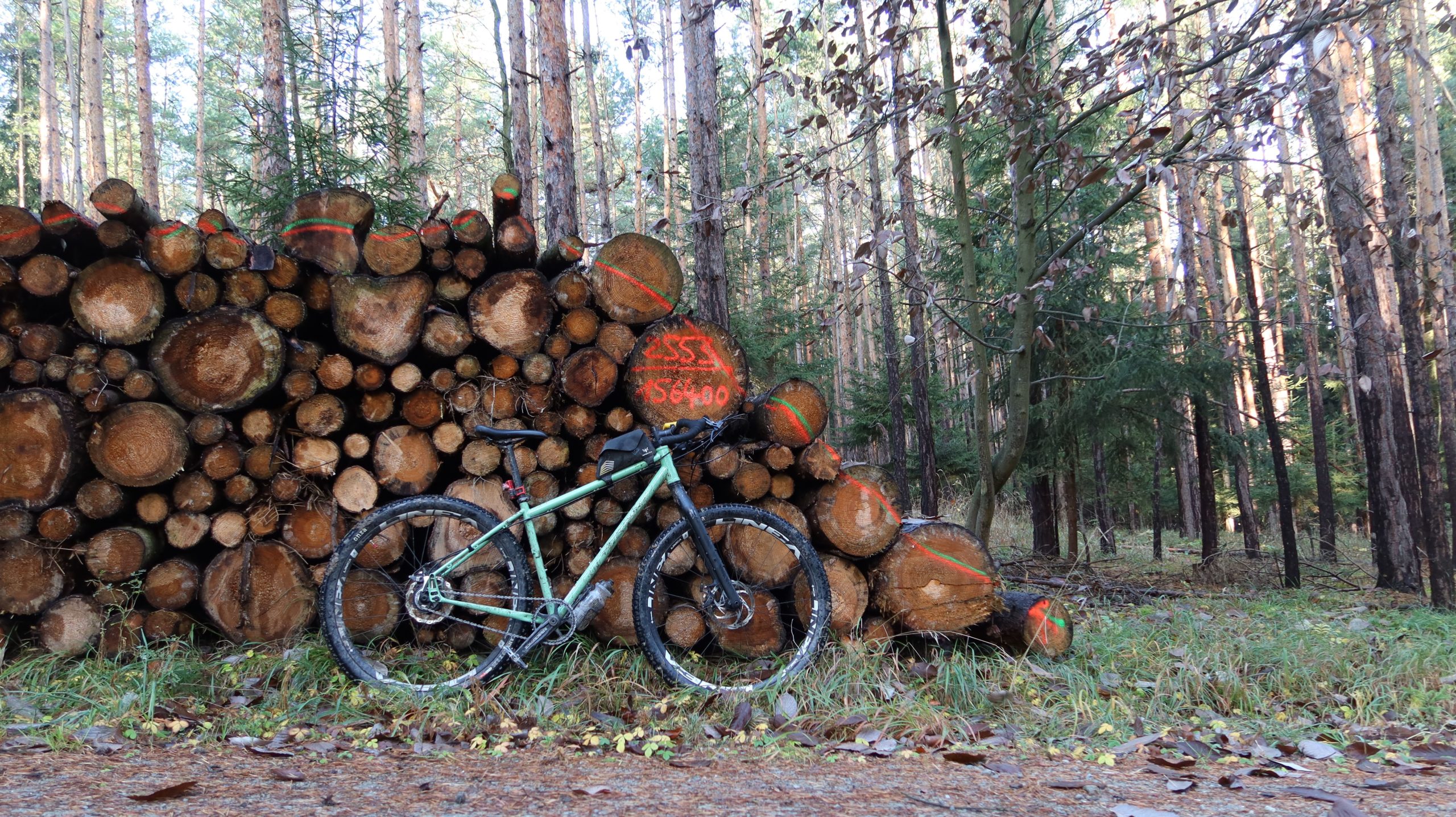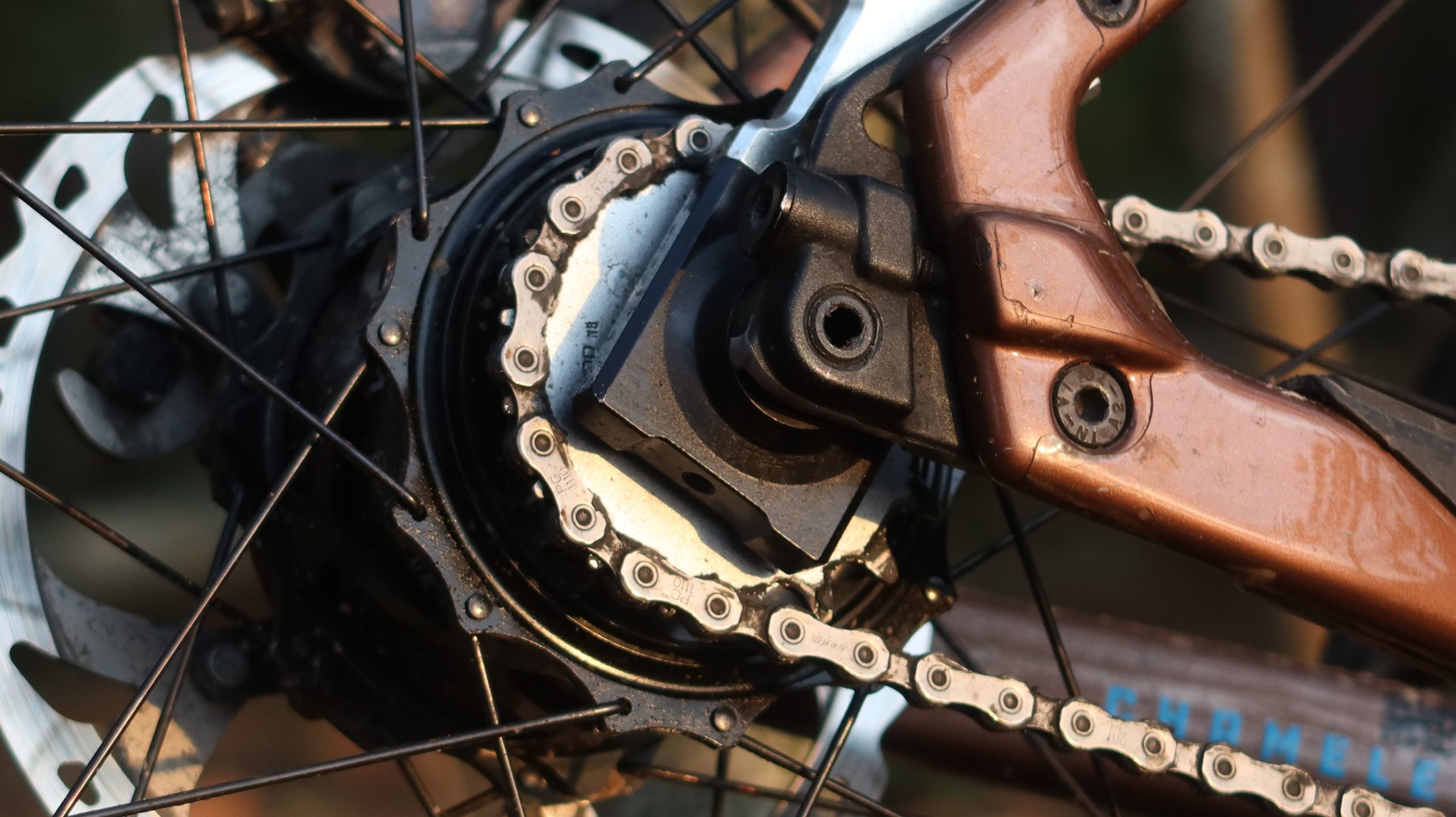On my recent trip to Norway I left my bike back home. Ahead of the trip I had two busy days filming with the BBC, and with little time to pack, I decided against bringing my own steed and used this as an opportunity to connect with bike companies in Norway, like Kindernay, a hub gear manufacturer located on the outskirts of Oslo.

Having ridden around the world on a singlespeed bike I value simplicity most when it comes to riding my bike. Living in Scotland I often ride off-road in muddy conditions, and tend to enjoy the time on the bike much more than the cleaning and maintenance procedure after. I also cycle all year-round and love riding in snow and ice, conditions in which a singlespeed bike excels.
The straight chain line of a singlespeed means that chains last often twice as long compared to a derailleur/cassette setup, sometimes even longer than that. The cog on the rear needs replacing every 7,000 – 10,000km, and the chainring on the front can do twice that mileage. Singlespeeding is a challenging, but often fun and inexpensive way of riding a bike (if interested, you can read more in this member’s feature on Singletrack World).
On my round the world trip I used a 32/18 ratio on my Surly Ogre. Without going into more detail, on a 29inch mountain bike this will mean that the bike travels about 52inches (1.3m) with one revelation of the crank. The ratio was a good ‘middle of the road’ choice, as it enabled me to cycle up hills and still maintain a decent speed on the flatter sections.

When I arrived in Norway, I asked Kindernay if I would be able to test their internal gear hub and they quickly sourced a bike for me. I got more excited when I discovered that the bike I was just about to test for a few days in the surroundings of the Oslofjord had exactly the same combination of chainring/cog fitted as the bike I rode 34,000km through 26 different countries around the world, but with a hub gear that would give me roughly the same gearing range as the 11-speed Kinesis Tripster gravel bike I currently use for most of my riding.
Internal gear hubs have the gears and lubricants sealed in the shell of the hub, different from derailleur systems, where the cassette and shifting mechanism are exposed to the elements. The success story of internal gear hubs began in England more than 100 years ago.
In 1896, William Reilly of Salford patented a 2-speed hub which went into production in 1898 as ‘The Hub’. By 1902, Reilly had designed a 3-speed hub gear. As he parted company with the manufacturer of ‘The Hub’ and had signed away to them the intellectual rights to his future gear designs, the patents for Reilly’s new hub gear were obtained in the name of his colleague, James Archer. Meanwhile, well-known English journalist and inventor Henry Sturmey had also invented a 3-speed hub gear. In 1903, Frank Bowden, head of the Raleigh Bicycle Company, formed The Three-Speed Gear Syndicate, having obtained the rights to both the Reilly/Archer and Sturmey 3-speeds. Reilly’s hub went into production as the first Sturmey Archer 3-speed.
Hub gears were used on bicycles all over the world by the 1930s, and were particularly popular in the UK, the Netherlands, the German-speaking countries and Scandinavia. Nowadays, cheaper, but less reliable, derailleur systems have taken over, but in many parts of northern Europe, where bicycles are more regularly used as daily transport, hub gears are still widely used. Germany-based Pinion also introduced sophisticated automotive transmission technology in an elaborately crafted aluminium housing in the centre of the frame, but this gearbox requires a special frame.
Germany-based Rohloff released its Speedhub in 1998, an internal gear hub with 14 speeds and a range of 526%, comparable to that of a 27-speed derailleur gear system. Quickly this became the gold standard in reliability and was used for many round the world trips by bike. Ten years after its release it was Mark Beaumont’s choice when in 2008 he broke the world record for the circumnavigation of the world by bike for the first time.
Brompton Bicycle, whose folding bikes have become an allrounder for city riding, also use internal hub gears, with either a 177% range on its standard 3-speed hubs, or an extended 300% range with an additional 2-speed derailleur. The system is useful for folding bicycles, where a multiple front chainset could foul the bike’s folding mechanism.
While hub gears are amongst the most reliable transmission systems for bikes, early internal hub gears like the Sturmey Archer had significant disadvantages too. It was hard or impossible to select another gear whilst pedalling. As the shifting was done by using a bowden cable, the rear wheel could not be completely separated from a bicycle with hub gears without also disconnecting the gear cable, which complicates the process of replacing an inner tube. And as the hub gear is an integral part of the wheel, it was not simply possible to change the wheel without also changing the hub gear.
With their modern internal gear hubs Kindernay, Rohloff and also Shimano (with its Alfine hub), have addressed the first two points remarkably well. However, Kindernay is the first company to address the third disadvantage, interchangeability, remarkably well too.
The company manufactures all hubs in Norway, and offers two models, the VII and XIV, with seven and fourteen speeds. I had the opportunity to test both hubs, with the VII mounted on a Santa Cruz Chameleon hardtail with straight handlebars on a weekend bikepacking trip around the Oslofjord in South Norway, and the XIV mounted on a Salsa Fargo with drop-bars on a few shorter rides around the city of Erfurt in Germany.
Both hubs performed exceptionally well. Shifting gears on steep inclines under load was very easy and smooth. The difference between the two hubs are the gear steps, with 28% for the VII and 13.9% for the XIV. I was riding a tubeless setup both times and didn’t have the pleasure of removing the wheel and changing a tube while out riding. As I had to box one of the bikes afterwards, extracting the rear wheel was very easy. But compared with other systems the biggest advantage of the Kindernay is the SWAP cage, in which the hub unit sits. It allows easy and quick wheel changes while using the same hub, different to Rohloff and Shimano hubs, which can only be used in one wheel.
Modern hub gears like the Kindernay XIV (ca. £1,400) or Rohloff Speedhub (ca. £1,200) are still expensive and relatively heavy compared to derailleur systems, but they offer exceptional longevity and low maintenance. The Shimano Alfine (£500) is significantly cheaper, but only available for 135 mm O.L.D. Over the years they’ll eventually become more cost-effective than their derailleur counterparts. While the Rohloff system weighs in at around 120g per gear, Kindernay reduced this to 100g on its 14-speed hub, which is roughly the same as the weight of a derailleur system.
So far any of those systems were not really compatible with drop-bar bikes. Rohloff uses a twist shifter and Kindernay offers the choice of a Onesie, a hydraulic shifter with two push levers, or the Twosie, two thumb shifters mounted on either side of the handlebars. Both are best mounted on straight bars. But very recently Surly came up with the Corner Bar, which allows one to try out a drop-bar hand position and ride experience while running mountain bike shifters and brake levers. With this bar, which was mounted on one of my test bikes, hub gears are no longer out of reach for gravel bikes.
Having also ridden the Rohloff Speedhub on my brother’s bike, my favourite internal hub gear setup so far was the Kindernay VII. It provided me with enough gear range for bikepacking adventures, is 200g lighter and £350 cheaper than its 14-speed counterpart. It also fits a 12mm thru-axle, the standard in most modern bikes.
After years of either riding singlespeed or derailleur geared systems, I really enjoyed the few rides on both internal gear hubs. They made me curious for more, so the next step will be to fit the Kindernay VII with the Surly Corner bar on my gravel bike for winter adventures. And while I still love the challenge of riding singlespeed bikes, a hub gear setup might possibly become my favourite choice in the future.
Markus Stitz
Ghyllside Cycles offers the Kindernay hubs in the UK. The Kindernay XIV was tested on those rides in Germany, and the Kindernay VII on those rides in Norway, available for free on Komoot. You can read more about cycling in Norway in this blog.
If you want to take your bike on an adventure make sure you get yourself covered with bike insurance from Yellow Jersey.